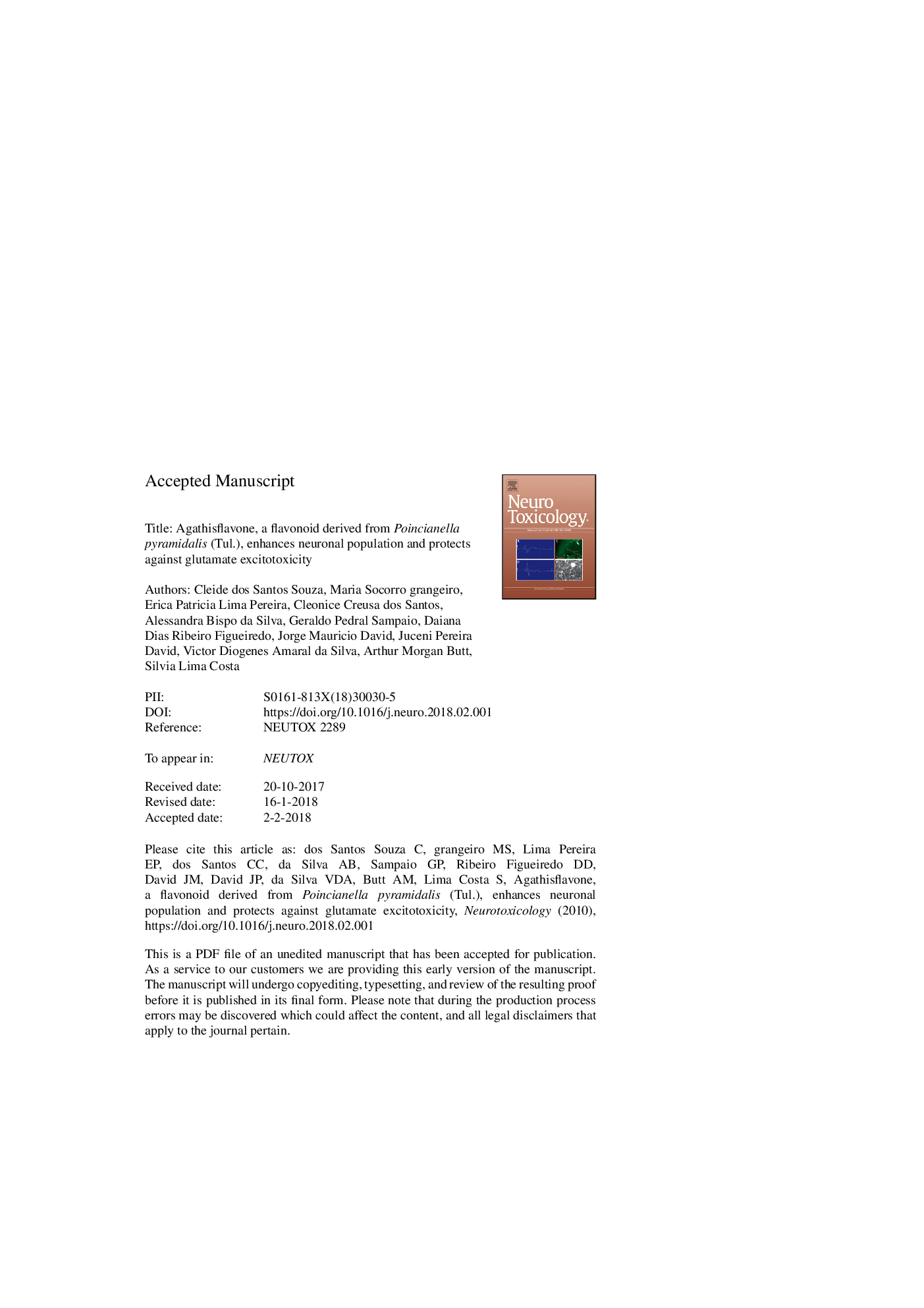| کد مقاله | کد نشریه | سال انتشار | مقاله انگلیسی | نسخه تمام متن |
|---|---|---|---|---|
| 8550208 | 1562029 | 2018 | 30 صفحه PDF | دانلود رایگان |
عنوان انگلیسی مقاله ISI
Agathisflavone, a flavonoid derived from Poincianella pyramidalis (Tul.), enhances neuronal population and protects against glutamate excitotoxicity
دانلود مقاله + سفارش ترجمه
دانلود مقاله ISI انگلیسی
رایگان برای ایرانیان
کلمات کلیدی
موضوعات مرتبط
علوم زیستی و بیوفناوری
علوم محیط زیست
بهداشت، سم شناسی و جهش زایی
پیش نمایش صفحه اول مقاله

چکیده انگلیسی
Flavonoids are bioactive compounds that are known to be neuroprotective against glutamate-mediated excitotoxicity, one of the major causes of neurodegeneration. The mechanisms underlying these effects are unresolved, but recent evidence indicates flavonoids may modulate estrogen signaling, which can delay the onset and ameliorate the severity of neurodegenerative disorders. Furthermore, the roles played by glial cells in the neuroprotective effects of flavonoids are poorly understood. The aim of this study was to investigate the effects of the flavonoid agathisflavone (FAB) in primary neuron-glial co-cultures from postnatal rat cerebral cortex. Compared to controls, treatment with FAB significantly increased the number of neuronal progenitors and mature neurons, without increasing astrocytes or microglia. These pro-neuronal effects of FAB were suppressed by antagonists of estrogen receptors (ERα and ERβ). In addition, treatment with FAB significantly reduced cell death induced by glutamate and this was associated with reduced expression levels of pro-inflammatory (M1) microglial cytokines, including TNFα, IL1β and IL6, which are associated with neurotoxicity, and increased expression of IL10 and Arginase 1, which are associated with anti-inflammatory (M2) neuroprotective microglia. We also observed that FAB increased neuroprotective trophic factors, such as BDNF, NGF, NT4 and GDNF. The neuroprotective effects of FAB were also associated with increased expression of glutamate regulatory proteins in astrocytes, namely glutamine synthetase (GS) and Excitatory Amino Acid Transporter 1 (EAAT1). These findings indicate that FAB acting via estrogen signaling stimulates production of neurons in vitro and enhances the neuroprotective properties of microglia and astrocytes to significantly ameliorate glutamate-mediated neurotoxicity.
ناشر
Database: Elsevier - ScienceDirect (ساینس دایرکت)
Journal: NeuroToxicology - Volume 65, March 2018, Pages 85-97
Journal: NeuroToxicology - Volume 65, March 2018, Pages 85-97
نویسندگان
Cleide dos Santos Souza, Maria Socorro Grangeiro, Erica Patricia Lima Pereira, Cleonice Creusa dos Santos, Alessandra Bispo da Silva, Geraldo Pedral Sampaio, Daiana Dias Ribeiro Figueiredo, Jorge Mauricio David, Juceni Pereira David,